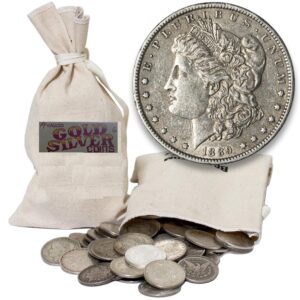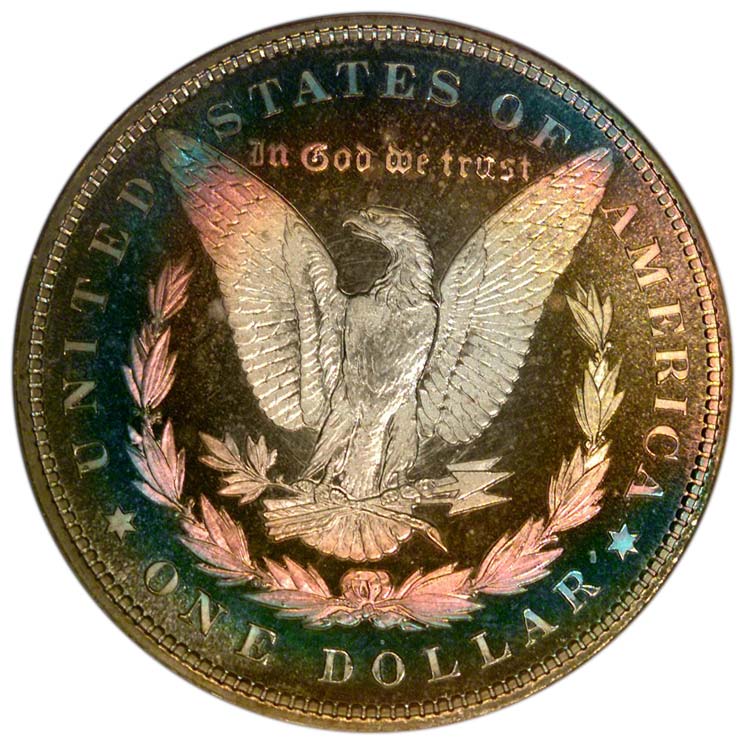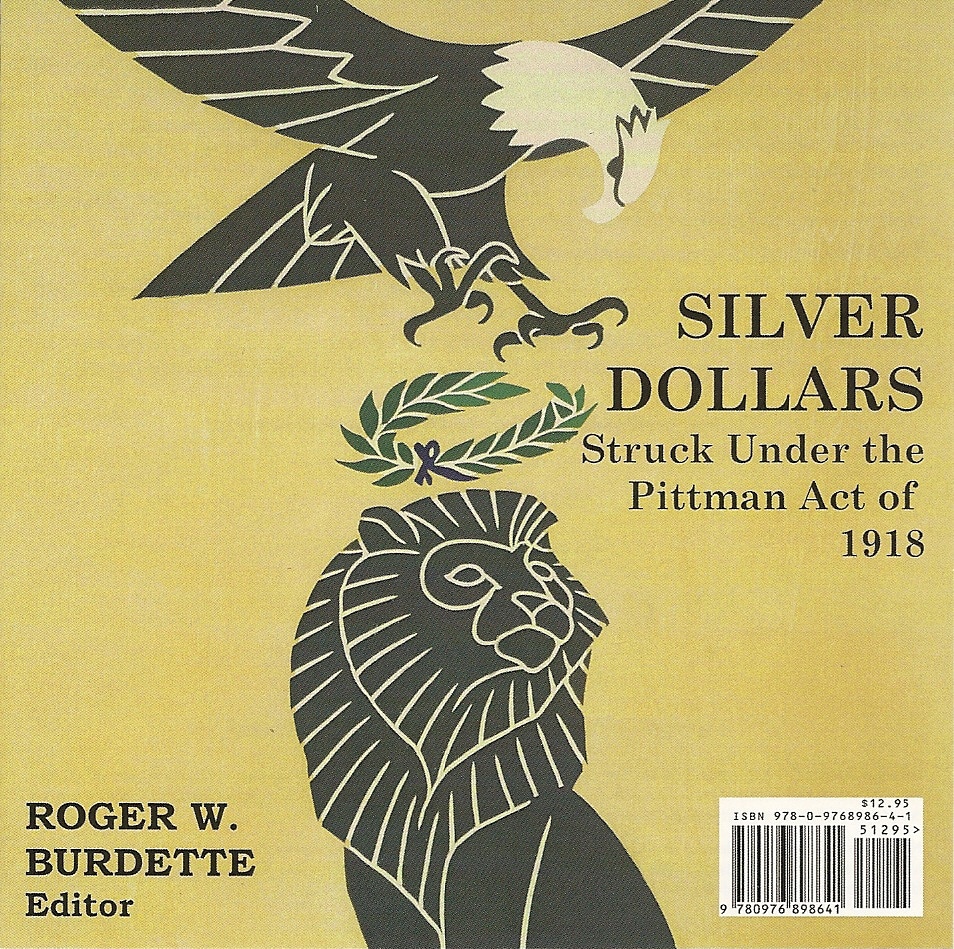Silver Coin History
The Morgan Silver Dollar was minted from 1878 through 1904 and again in 1921. Over the course of these years over 650 Million Morgan Silver Dollars Rolled off the mint presses of Carson City, Denver, Philadelphia, San Francisco, and New Orleans.
The Peace Silver Dollar was minted from 1921 through 1935. Anthony De Francisci Designed this coin.
Silver Dollars are the most recognizable coin on the planet! With this comes many options that other products do not offer.
Privacy
Trade ability
Liquidity


No other U. S. silver coin can compare with the rich history enjoyed by the Morgan silver dollar (also known as the Liberty Head silver dollar). Designed by George T. Morgan, the Morgan dollar remains a favorite of both casual and serious coin collectors.
The Morgan silver dollar is one of the few coins to be produced by five different U.S. Mints (as was the $20 Gold Liberty) from 1878 thru 1921: Carson City; Denver; New Orleans; Philadelphia; and San Francisco.
1921 was the only year the Denver mint produced Morgan silver dollars. During that year, a total of 20,345,000 Morgan dollars were produced with the “D” mint mark.
Minting of the Morgan silver dollar was suspended in 1904 due a government shortage of silver bullion. Only about 8,812,000 (a relatively small mintage) were produced that year. In 1921, production resumed in a big way with approximately 86,000,000 minted but later that year the Morgan dollar was replaced by the Peace Dollar.
The world would be awash in Morgan silver dollars except for two events: 1) the Pittman Act of 1918 permitted the melting of 270,232,722 Morgans for their silver content; and, 2) unknown millions more were turned in and melted when silver reached an all time high of $50.50 per ounce in 1980. So the number of Morgan dollars in existence is far less than the number minted (it is reported than less than 20 percent of all Morgans minted still exist).
SILVER DOLLARS
Prior to 1964, the U.S. Mint produced cons that were 90 percent pure silver and 10 percent copper or other alloy. Up until around 1960,1morganpile when the price of silver was just over a dollar per troy ounce, a silver dollar was worth, well, a dollar. You could go down to your local bank and exchange a hundred dollar bill for 100 silver Peace Dollars. Over the years, as the price of silver climbed, those circulated silver dollars became worth a whole lot more than a dollar!
Morgan Silver Dollars were minted from 1878-1904 and again in 1921 before they were replaced by the Peace Dollar. The Silver Peace Dollar was minted from 1921-1928 and thenfrom 1934-1935. Morgan Dollars had a total mintage of nearly 657 million, although less than 20 percent of the coins are estimated to still exist today.
Under the terms of the Pittman act in 1918, the U.S. Mint melted down 270,232,722 Morgan dollars and used some of that bullion to produce the Peace Dollar. An unknown but very substantial amount of Morgan Dollars were also melted down for their pure silver value around 1980, when spot silver reached $50 Per troy ounce.
unlike a one ounce American Silver Eagle, which contains one pure ounce of fine silver and weighs slightly more than an ounce, a circulated Morgan Silver Dollar contains just 0.7650 pure silver. The coin itself is 90 percent silver and 10 percent copper and weighs 26.73 grams.


BACKGROUND
In 1873, Congress enacted the Fourth Coinage Act,((sfn The Comprehensive U. S. Silver Dollar Encyclopedia p=4)), which effectively ended the bimetallic standard in the United States by demonetizing silver bullion. Prior to enactment of the Coinage Act, silver could be brought to the mints and coined into legal tender for a small fee. With such a system in place, bullion producers could have silver coined into dollars when the intrinsic value of a silver dollar was lower than the face value, thus making a profit, flooding the money supply and causing inflation. The act ended production of the standard silver dollar (then the Seated Liberty Dollar, as designed by Christian Gobretch) and provided for mintage of a silver trade dollar, which was intended to compete with Mexican dollars for use in the Orient. Under the act, bullion producers were allowed to bring bullion to the mints in order to be cast into bars or coined into the newly authorized trade dollars for a small fee. Trade dollars initially held legal tender status, but it was revoked in 1876 to prevent bullion producers from making a profit by coining silver into trade dollars when the value of the metal was low. The restrictions on free coinage laid out in the Coinage Act initially met little resistance from mining interests until the price of silver declined rapidly due to increased mining in the Western United States. Protests also came from bankers, manufacturers and farmers, who felt an increased money supply would have a positive impact. Groups were formed that demanded the free coinage of silver (or “Free Silver”) in order to inflate the dollar following the Panic of 1873.
Beginning in 1876, several bills were introduced in the House of Representatives in an effort to resume the free coinage of silver. One such bill introduced into the House by Democratic Representative Richard P. Bland of Missouri was passed in the fall of 1876. Republican senator William B. Allison of Iowa added important amendments to the bill in the Senate. The House bill allowed Free Silver; one of Allison’s amendments struck that provision. This same amendment allowed for the issuance of silver certificates for the first time in United States history. The bill was vetoed by President Rutherford B. Hayes. The president’s veto was overridden on February 28, 1878. What came to be known as the Bland-Allison Act required that the Treasury purchase between two and four million dollars’ worth of silver per month, to be coined into silver dollars at the former gold/silver value ratio of 16:1, meaning that one ounce of gold would be valued the same as sixteen ounces of silver.
DESIGN HISTORY
In 1876, Director of the Mint Henry Richard Linderman began efforts to redesign the nation’s silver coins. Linderman contacted C.W. Fremantle, Deputy Master of the Royal Mint in London, requesting him to “find a first class die-sinker who would be willing to take the position of Assistant Engraver at the Mint at Philadelphia.” In response to Linderman’s request, Fremantle wrote “My inquiries as to an Assistant Engraver lead me very strongly to recommend for the post Mr. George Morgan, age 30, who has made himself a considerable name, but for whom there is not much opening at present in this country.” An agreement was reached between Linderman and Morgan for the engraver to work at the Philadelphia Mint under Chief Engraver William Barber on a six-month trial basis.
Morgan arrived in Philadelphia on October 9, 1876. His earliest pattern coins designed during his tenure at the Philadelphia Mint were intended for the half dollar. In 1876, Morgan enrolled as a student at the Pennsylvania Academy of the Fine Arts to prepare to create a new Liberty head design. Morgan also obtained studies from nature of the bald eagle for preparation of the reverse design. For the representation of Liberty, Morgan sought to depict an American woman rather than the usual Greek–style figures. Morgan’s friend, artist Thomas Eakins, suggested he use Anna Willess Williams of Philadelphia as a model. In total, Morgan had five sittings with Williams; he declared her profile to be the most perfect he had seen.
On October 18, 1877, Linderman requested Superintendent of the Philadelphia Mint James Pollock to “instruct Mr. Morgan to prepare without delay, dies for a silver dollar, the designs, inscriptions, and arrangement thereof to be the same as the enclosed impression for the Half Dollar and numbered ‘2’ substituting the words ‘one dollar’ in place of ‘half dollar’”. Linderman also ordered Pollock to “instruct Mr. Barber to prepare a reverse die for a dollar with a representation of an eagle as well as the inscriptions required by law. He will select whichever of his Heads of Liberty he prefers for the obverse of the same.” Linderman evidently preferred the designs of Morgan over those of the Chief Engraver; he wrote Pollock on February 21, 1878, “I have now to state for your information, that it is my intention, in the event of the silver bill now pending in Congress, becoming law, to request the approval by the Secretary of the Treasury, of the dies prepared by Mr. Morgan.”


DESIGN HISTORY
In 1876, Director of the Mint Henry Richard Linderman began efforts to redesign the nation’s silver coins. Linderman contacted C.W. Fremantle, Deputy Master of the Royal Mint in London, requesting him to “find a first class die-sinker who would be willing to take the position of Assistant Engraver at the Mint at Philadelphia.” In response to Linderman’s request, Fremantle wrote “My inquiries as to an Assistant Engraver lead me very strongly to recommend for the post Mr. George Morgan, age 30, who has made himself a considerable name, but for whom there is not much opening at present in this country.” An agreement was reached between Linderman and Morgan for the engraver to work at the Philadelphia Mint under Chief Engraver William Barber on a six-month trial basis.
Morgan arrived in Philadelphia on October 9, 1876. His earliest pattern coins designed during his tenure at the Philadelphia Mint were intended for the half dollar. In 1876, Morgan enrolled as a student at the Pennsylvania Academy of the Fine Arts to prepare to create a new Liberty head design. Morgan also obtained studies from nature of the bald eagle for preparation of the reverse design. For the representation of Liberty, Morgan sought to depict an American woman rather than the usual Greek–style figures. Morgan’s friend, artist Thomas Eakins, suggested he use Anna Willess Williams of Philadelphia as a model. In total, Morgan had five sittings with Williams; he declared her profile to be the most perfect he had seen.
On October 18, 1877, Linderman requested Superintendent of the Philadelphia Mint James Pollock to “instruct Mr. Morgan to prepare without delay, dies for a silver dollar, the designs, inscriptions, and arrangement thereof to be the same as the enclosed impression for the Half Dollar and numbered ‘2’ substituting the words ‘one dollar’ in place of ‘half dollar’”. Linderman also ordered Pollock to “instruct Mr. Barber to prepare a reverse die for a dollar with a representation of an eagle as well as the inscriptions required by law. He will select whichever of his Heads of Liberty he prefers for the obverse of the same.” Linderman evidently preferred the designs of Morgan over those of the Chief Engraver; he wrote Pollock on February 21, 1878, “I have now to state for your information, that it is my intention, in the event of the silver bill now pending in Congress, becoming law, to request the approval by the Secretary of the Treasury, of the dies prepared by Mr. Morgan.”
PRODUCTION
Toned Morgan XF Production of the coins did not commence until March 11, more than a week after the passage of the Bland–Allison Act. The first acceptable strike, after adjustments to the press, was coined at 3:17 p.m. at the Philadelphia Mint. This piece was given to President Hayes; the second and third were given to Secretary of the Treasury John Sherman and to Mint Director Henry Linderman.
Linderman desired to involve the western mints of San Francisco and Carson City in production in order to help reach the monthly quota necessary under the Bland–Allison Act. Pressure was so great at the Philadelphia Mint that it halted production of all other coins and began operating overtime. Use of the western mints was delayed, however, as all dies were prepared at the Philadelphia Mint, and it was believed that the Western mints did not have the proper equipment to prepare the dies for use. During the second week of production, Linderman pointed out what he called a “slight imperfection” in the dies for the dollar. The reason for the changes was to reduce the relief of the designs and to change the number of tail feathers on the eagle from eight to seven; this was done because all prior United States coinage depicted the bald eagle as having an odd number of tail feathers. The high relief had caused the dies to have a shorter life. Dies were eventually sent to the Western mints, arriving in both San Francisco and Carson City on April 16, 1878. The New Orleans Mint began striking the new silver dollars in 1879. Throughout the series numerous small die varieties occurred. These have been cataloged by Leroy Van Allen and George Mallis into VAM Numbers for each year, and examples of each are in demand by advanced collectors.
The Denver Mint, established in 1906, struck the coins for only one year, in 1921. The mint marks appearing on the coins are none, representing Philadelphia, “CC” for Carson City, “S” for San Francisco, “O” for New Orleans and “D” for Denver. In order to conform to the Coinage Act of 1837, the Morgan dollar contained ninety percent silver and ten percent copper, measured 38.1 millimetres (1.50 in) in diameter and weighed 412.5 grains (26.73 g).


CARSON CITY MINT MORGAN DOLLARS
Until 1964, U.S. citizens could redeem paper money known as silver certificates for silver dollars at a U.S. Treasury mint on demand. In 1962, an individual redeemed a silver certificate and received a rare and valuable Morgan dollar in exchange. The coin was from a bag of silver dollars in the vault of the Philadelphia Mint. This incident triggered huge interest, and between November 1962 and March 1964, millions of Morgan and Peace dollars were sold to the general public. The demand to exchange silver certificates for silver dollars was so great that lines formed outside of the Treasury Building in Washington D.C.. Some people in line were pushing wheelbarrows. The U.S. Treasury discovered previously unknown mint bags of Carson City dollars in its vaults containing slightly more than 2.8 million Carson City silver dollars in the Treasury vaults. Treasury officials decided to hold them back because the total number of coins minted at the Carson City mint were generally lower than others.
On May 12, 1969, the Joint Commission on Coinage held a meeting in order to determine the best way to sell the Carson City-minted dollars earlier held back by Treasury officials. They recommended a mail bid sale. Legislation was passed on December 31, 1970 directing the Treasury to transfer the silver dollars to the Administrator of General Services who was given the responsibility for marketing and selling the coins. The legislation also stated that all proceeds from the sale were to be “covered into the Treasury as miscellaneous receipts.” Congress supplied the General Services Administration with $10 million to market the dollar coins. Advertising consisted of posters and brochures distributed to post offices, banks and various financial institutions, as well as television documentaries. The coins were sorted and mounted in small plastic display cases. The GSA conducted a total of seven mail bid sales between 1972 and 1980. In total, the sales generated $107 million in revenue.
THE PITTMAN ACT
PittmanActThe German government began a propaganda campaign during World War I to discredit the United Kingdom’s currency in India. The Germans convinced India citizens that British banknotes in that country could not be redeemed for silver. This led to a run on the British supply of silver. In response, United States Democratic senator Key Pittman of Nevada introduced legislation in 1918 that was intended to offer financial relief to the British government. The bill, passed on April 22, 1918, stated that “sales of silver bullion under authority of this act may be made for the purpose of conserving the existing stock of gold in the United States, of providing silver for subsidiary coinage and for commercial use, and of assisting foreign governments at war with the enemies of the United States”. The Pittman Act authorized the U.S. to melt up to 350,000,000 silver dollars, and this commenced immediately after the Act’s passage. The U.S. eventually melted a total of 270,232,722 silver dollars. Of that amount, 259,121,554 were sold to the United Kingdom at the cost of one dollar per troy ounce.
The U.S. only minted the Morgan dollar again during 1921, the only year in which Morgan dollars were struck at the Denver mint. Since the Treasury had destroyed the obsolete Morgan dollar dies in 1910, Morgan had to create an entirely new master die. Another provision of the Pittman Act authorized the U.S. to mint a replacement coin for every silver dollar melted. During the same year, the Peace dollar was first issued to commemorate the end of World War I. The Peace dollar was supposedly minted to replace the Morgan dollar under the terms of the Pittman Act but without congressional authorization, despite the fact that the Act did not describe the coin design. The change in design was actually authorized under an 1890 act of Congress, which stated:
But no change in the design or die of any coin shall be made oftener than once in twenty-five years from and including the year of the first adoption of the design, model, die, or hub for the same coin:
Provided, That no change be made in the diameter of any coin:
And provided further, That nothing in this section shall prevent the adoption of new designs or models for devices or emblems already authorized for the standard silver dollar and the five-cent nickel piece as soon as practicable after the passage of this act.

